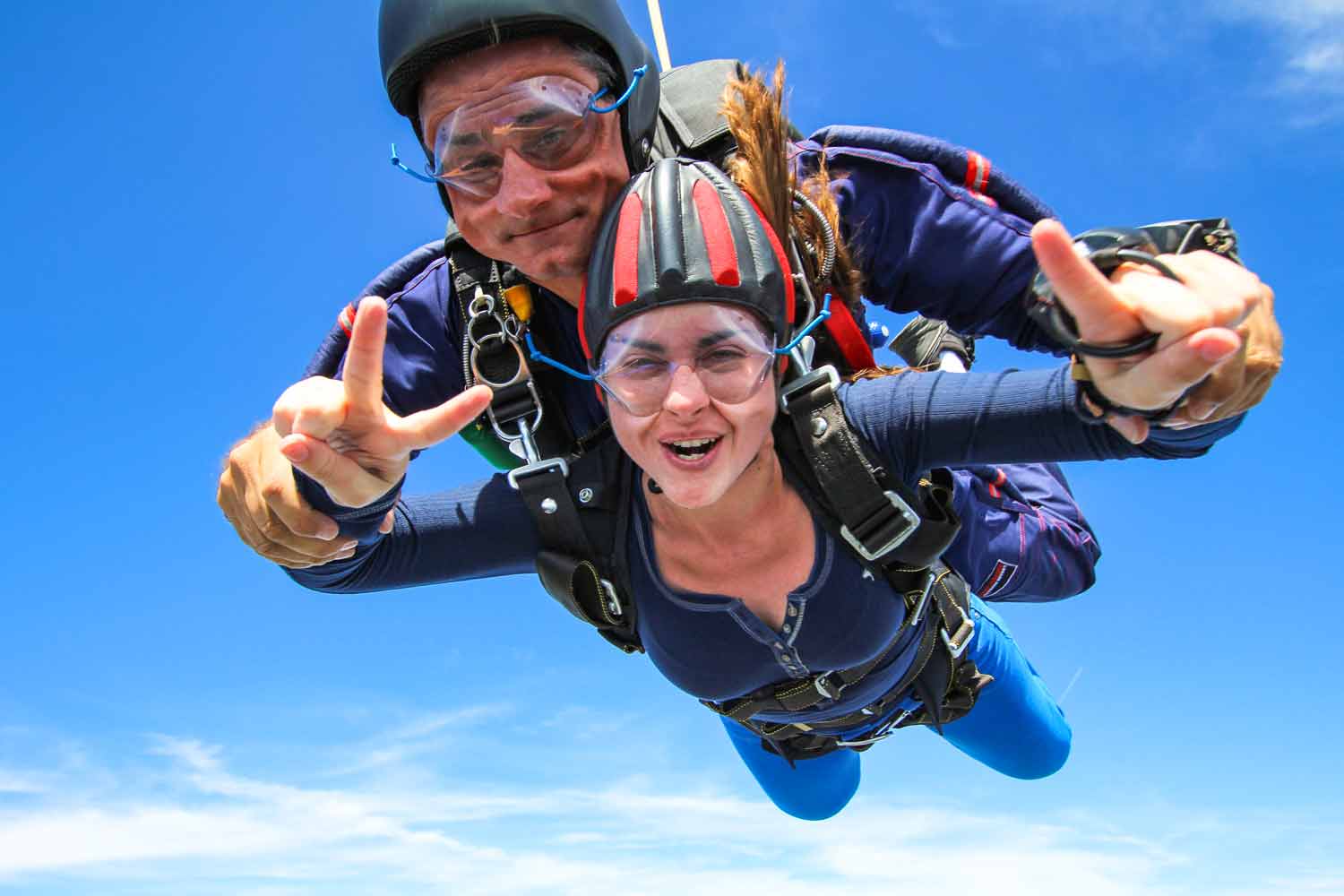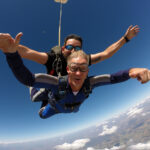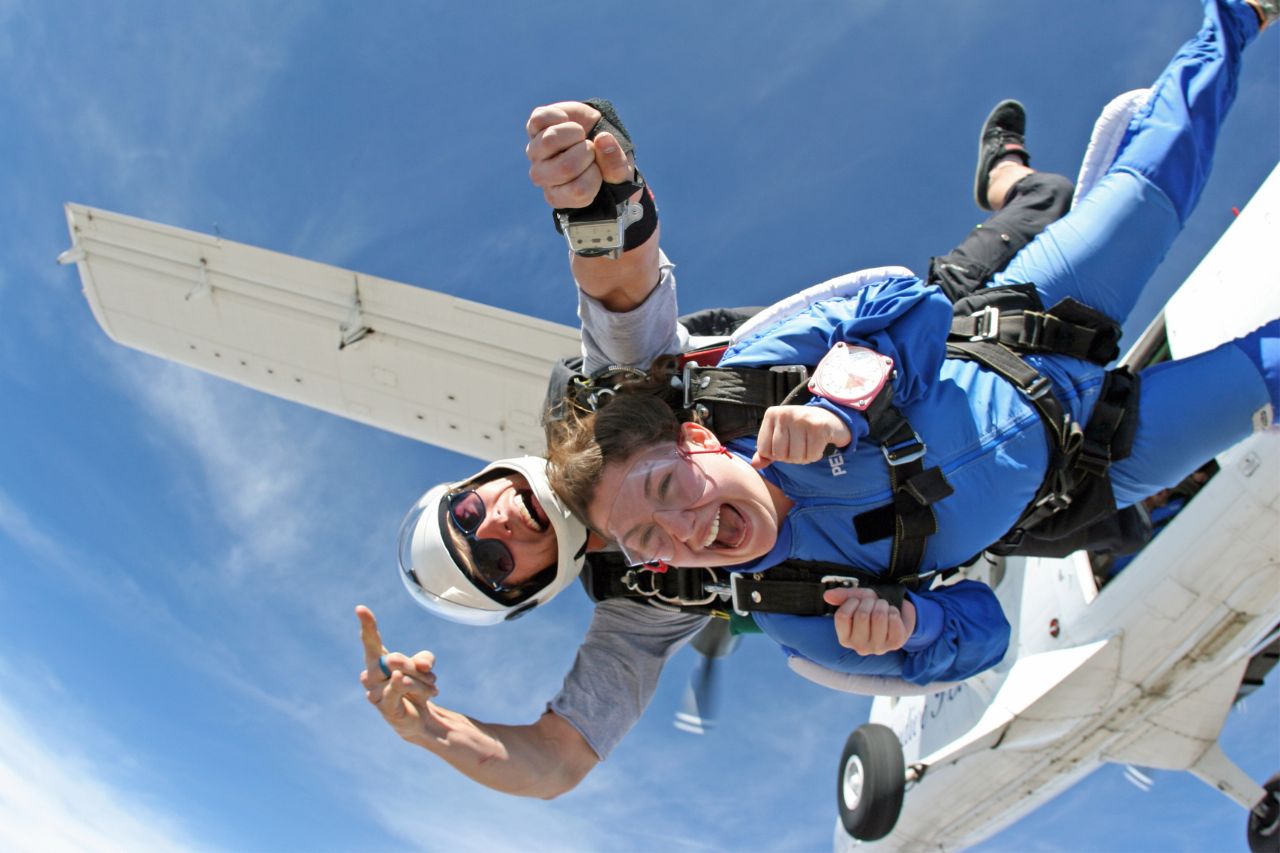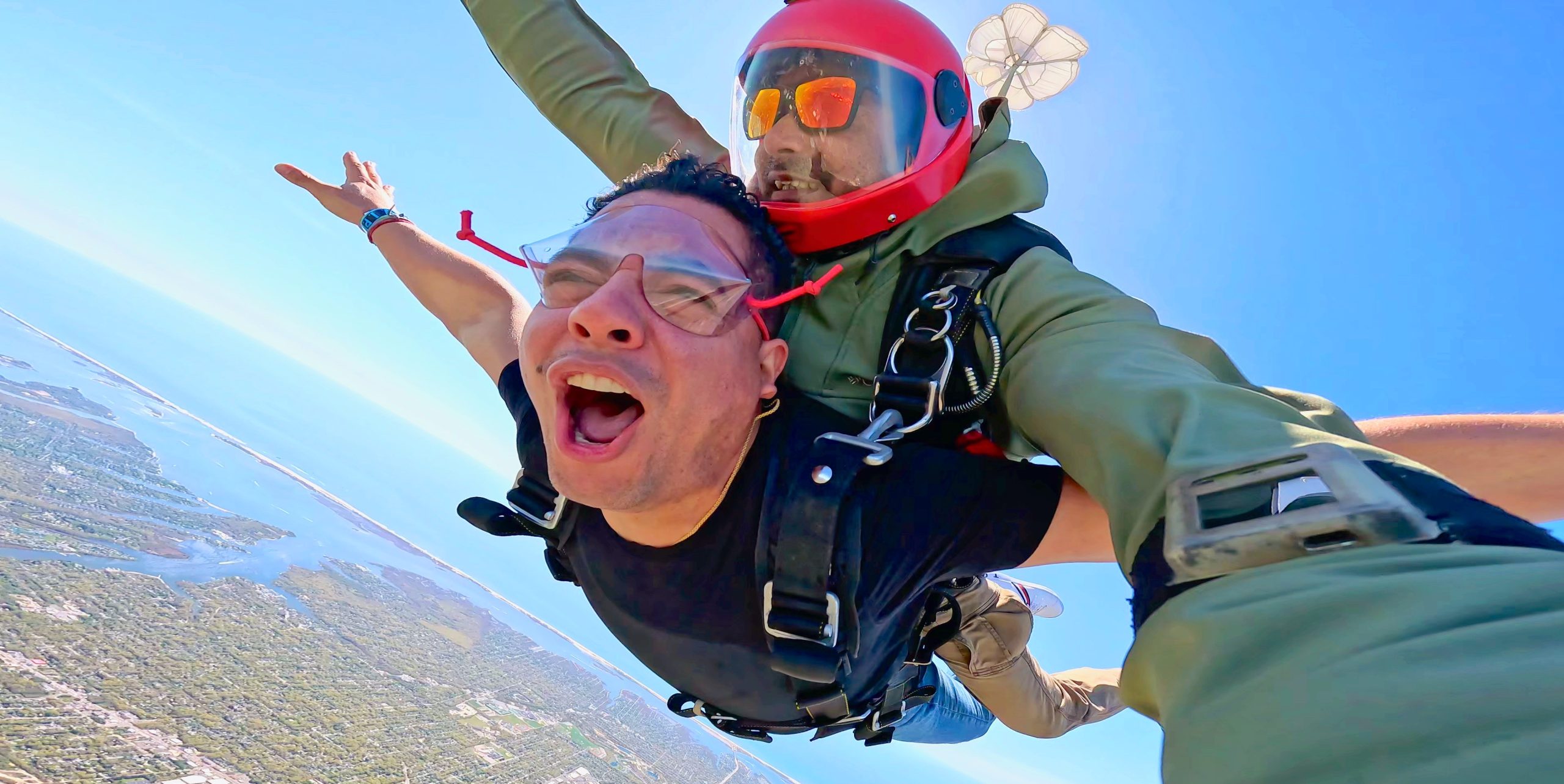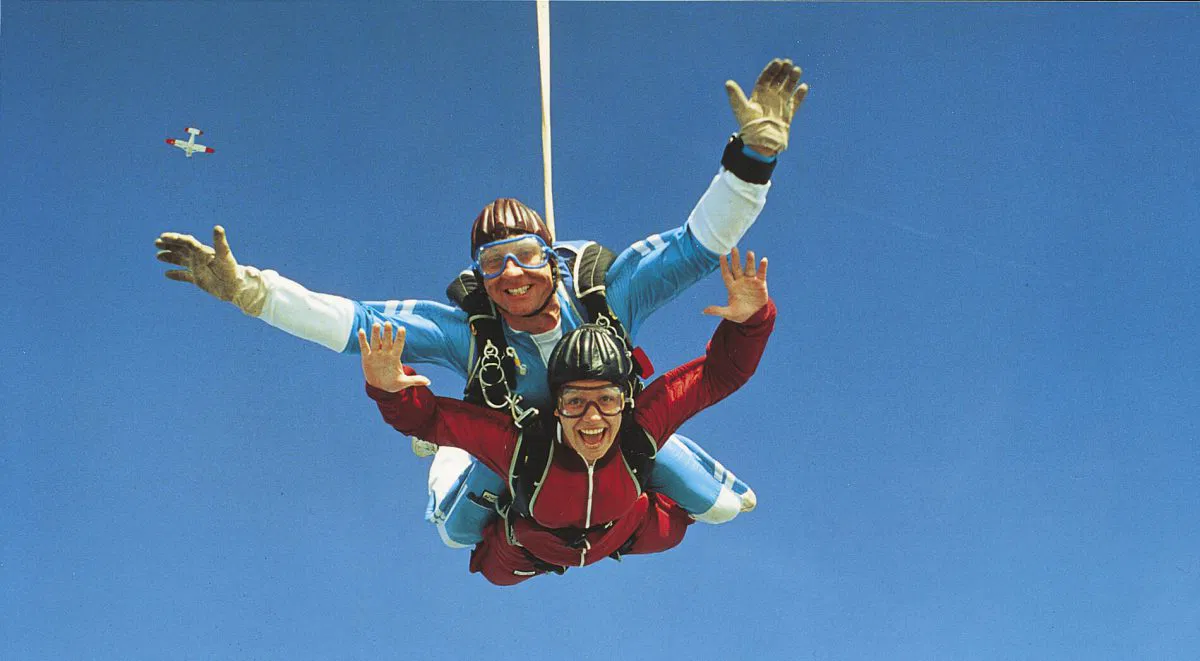Skydiving is one of the most exhilarating experiences a thrill-seeker can have. The feeling of freefalling from thousands of feet above the ground, with the wind rushing past you and the world stretching out below, is unmatched. But have you ever wondered how high skydivers jump? Whether you are a beginner, an adventure seeker, or simply curious, this guide will reveal the heights skydivers reach, fascinating facts about skydiving, and tips for your first jump.
- 1. Typical Skydiving Heights for Beginners
- Table of Contents
- 2. Can You Skydive from Extreme Altitudes?
- 3. Military Skydiving Heights
- 4. Skydiving Heights Around the World
- 5. Measuring Skydiving Heights
- 6. Tips for First-Time Skydivers
- 7. Fun Facts About Skydiving Heights
- FAQs About how high do skydivers jump
- Conclusion
1. Typical Skydiving Heights for Beginners
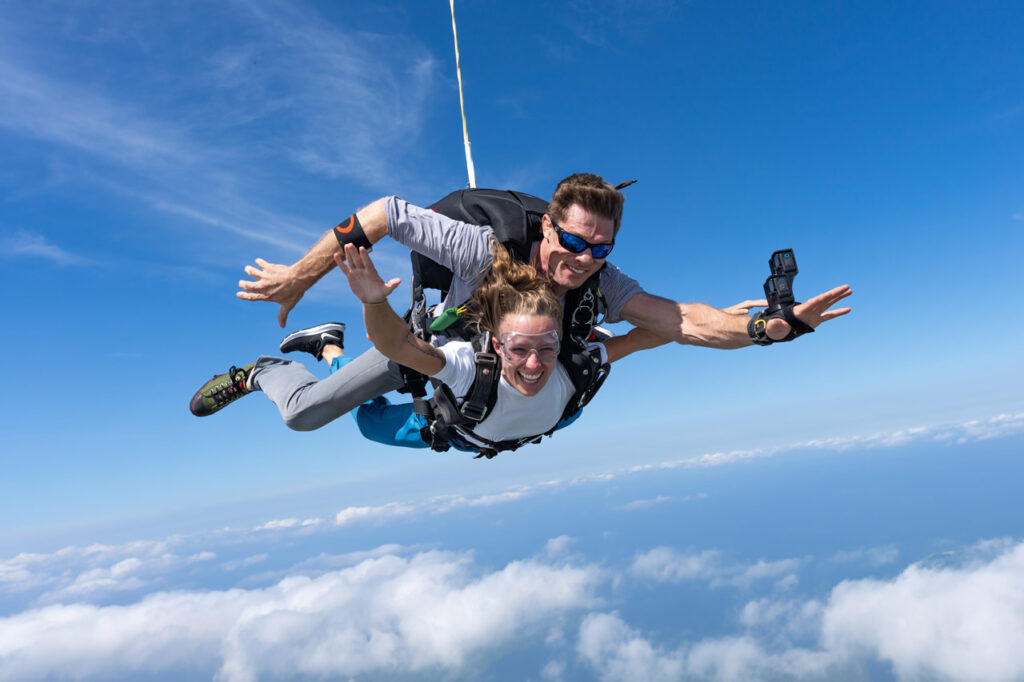
Table of Contents
For most beginner skydivers, the standard jump altitude ranges between 10,000 and 15,000 feet (around 3,000–4,500 meters). This range provides enough freefall time to enjoy the experience while keeping safety a top priority.
- Freefall duration: A jump from 14,000 feet typically allows around 40–60 seconds of freefall before the parachute opens.
- Tandem jumps: Beginners often do tandem jumps, attached to a certified instructor who controls the parachute, ensuring a safe and smooth descent.
- Safety measures: Dropzones are equipped with trained staff, proper gear, and rigorous safety protocols.
2. Can You Skydive from Extreme Altitudes?
Some skydivers seek extreme thrills by jumping from altitudes far beyond the typical range.
- 30,000–35,000 feet jumps: Yes, it is possible to skydive from these heights, but supplemental oxygen is required because the air is too thin to breathe safely.
- Record-setting jumps: The highest skydives ever performed have surpassed 128,000 feet, like Felix Baumgartner’s famous jump in 2012.
- Considerations: High-altitude jumps involve specialized suits, pressurization, and careful planning to manage extreme temperatures and pressure changes.
These extreme jumps are usually for professional skydivers or those participating in special events.
3. Military Skydiving Heights
Military skydivers often use HALO (High Altitude, Low Opening) and HAHO (High Altitude, High Opening) techniques to perform tactical insertions.
- Typical altitudes: Military jumps can range from 15,000 to 35,000 feet, depending on mission requirements.
- Low-opening jumps: HALO jumps involve opening the parachute at lower altitudes for stealth.
- High-opening jumps: HAHO jumps allow long glides over distances, often hundreds of kilometers.
Military skydiving requires rigorous training, oxygen equipment, and precise navigation skills.
4. Skydiving Heights Around the World
Skydiving heights vary depending on location, regulations, and dropzone facilities.
- California, USA: Standard jumps are around 13,000–15,000 feet, with tandem experiences and solo options available.
- India: Popular dropzones in India offer jumps from 10,000–14,000 feet, perfect for beginners and adventure seekers.
- Maximum height: Some locations allow jumps up to 18,000 feet, but higher altitudes require oxygen and specialized training.
- Minimum height: For safety reasons, most dropzones do not allow jumps below 10,000 feet, except for experienced skydivers under specific conditions.
5. Measuring Skydiving Heights
Understanding jump altitude is key for planning and safety.
- Feet vs kilometers: Skydiving heights are commonly measured in feet. For international clarity, 1,000 feet ≈ 0.305 km.
- Altitude measurement tools: Skydivers use altimeters, GPS devices, and visual markers to track their jump height.
- Typical conversions:
| Feet | Kilometers | Notes |
|——|————|——-|
| 10,000 | 3.05 km | Beginner tandem jump |
| 14,000 | 4.27 km | Standard solo jump |
| 30,000 | 9.14 km | High-altitude jump, oxygen needed |
| 35,000 | 10.67 km | Extreme jumps, professional level |
Understanding the altitude helps skydivers manage freefall time and parachute deployment safely.
6. Tips for First-Time Skydivers
If you are considering your first jump, here are essential tips:
- Choose the right jump height: Beginners should start with 10,000–15,000 feet to enjoy a manageable freefall.
- Prepare physically and mentally: Stay calm, follow instructions, and do light exercises to reduce anxiety.
- Professional guidance: Always do tandem jumps or take courses with certified instructors.
- Gear check: Ensure your parachute, altimeter, and harness are properly fitted and double-checked by staff.
These tips will help make your skydiving experience safe, memorable, and enjoyable.
7. Fun Facts About Skydiving Heights
- Highest jump ever: Felix Baumgartner jumped from 128,100 feet in 2012.
- Longest freefall: Some skydivers experience freefalls exceeding 4 minutes from high altitudes.
- Temperature extremes: Temperatures can drop below -50°C (-58°F) at extreme heights.
- Adrenaline rush: Freefall speeds reach 120 mph (193 km/h) in typical jumps.
Skydiving is not just an adventure sport—it’s a science of altitude, speed, and precision.
FAQs About how high do skydivers jump
Q1: What is the highest altitude a skydiver can jump from?
The highest skydiving jump recorded was 128,100 feet by Felix Baumgartner. Most recreational jumps occur between 10,000–15,000 feet, while extreme jumps above 30,000 feet require oxygen.
Q2: How long does it take to fall from 14,000 feet?
A typical freefall from 14,000 feet lasts around 40–60 seconds. The exact time depends on body position, parachute deployment, and wind conditions.
Q3: Do you need oxygen for high-altitude skydives?
Yes, for jumps above 15,000–18,000 feet, supplemental oxygen is necessary due to thinner air and reduced oxygen levels.
Q4: What is the minimum height for skydiving?
Most dropzones require a minimum jump height of 10,000 feet for beginners to ensure a safe freefall and parachute deployment.
Q5: How high do military skydivers jump?
Military jumps can range from 15,000 to 35,000 feet, using HALO or HAHO techniques for tactical purposes.
Conclusion
Skydiving is an awe-inspiring activity that pushes your limits and provides an unforgettable experience. Whether you are a beginner, an adventure seeker, or a thrill-lover, understanding how high skydivers jump is essential for safety and enjoyment. From typical beginner jumps at 10,000–15,000 feet to extreme high-altitude experiences, each jump offers a unique perspective on the world below.
Always prioritize safety, follow professional guidance, and enjoy every second of your flight through the skies. Your adventure begins at altitude—but the thrill lasts a lifetime!
For more information on jump heights and planning your first dive, visit our Skydiving Height Guide.
